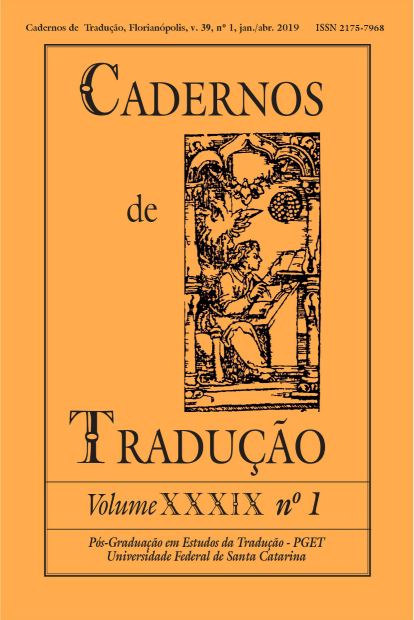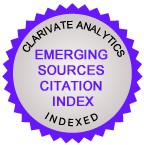Eeny, Meeny, Miny, Moe: The Reception of Retranslations and how readers choose.
DOI:
https://doi.org/10.5007/2175-7968.2019v39n1p216Abstract
One of the paradoxes of the digital age is that it has fostered small, independent enterprises alongside corporate multinationals, a trend reflected in publishing where international players co-exist on the web alongside small, independent publishers often keen to commission retranslations as ‘safe bets’. Due to customers’ ease of access over the Internet and sellers’ low costs, book sales increasingly correspond to the ‘long tail’ statistical model whereby high numbers of relatively few bestsellers are sold, with the graph ‘tailing off’ sharply to a high number of items selling few copies. Many retranslations are often available simultaneously and, as sales are spread among them, will tend to be distributed along this tail. As online book sales increase, whether as hard copies or in digital format, when it comes to buying a translated text, customers often find themselves confronted with a choice between several different editions. This paper investigates some of the influences affecting choice, using Italian retranslations of Fitzgerald’s The Great Gatsby and English retranslations of Machiavelli’s The Prince as examples. Reference will be made to the shift from professional review writing to online customer appraisals and star-ratings, the presence of retranslations on bestseller lists as well as to the importance of paratextual elements such as book covers.
References
Anderson, Chris. The Longer Long Tail: how endless choice is creating unlimited demand. Random House, 2007.
Baum, Cate. “Amazon Reviews: How Readers Look at Them, and how to sell using them.” Self-Publishing Review, 30 Jan. 2017, http://www.selfpublishingreview.com/2017/01/how-readers-look-at-amazon-book-pages/. Accessed 27 Oct. 2017.
Berman, Antoine. “La retraduction comme espace de la traduction.” Palimpsestes 4 (1990): 1-7.
Bishop, Todd, Amazon changes its key formula for calculating product ratings and displaying reviews, 20 Jun. 2015, www.geekwire.com/2015/amazon-changes-its-influential-formula-for-calculating-product-ratings/. Accessed 27 Oct. 2017.
Brownlie, Siobhan. “Narrative Theory and Retranslation Theory.” Across Languages and Cultures 7.2 (2006): 145-170.
Chartier, Roger. “Laborers and Voyagers: from the text to the reader.” Trans. J. A. González, Diacritics 22. 2, (1992): 49-61.
Cronin, Michael. Translation in the Digital Age. Routledge, 2013.
Dollerup, Cay. Tales and Translation: The Grimm Tales from Pan-Germanic Narratives to Shared International Fairytales. John Benjamins, 1999.
Eker Roditakis, Arzu. “Reviewers as Readers with Power: What a Case of Retranslation Says about Author, Translator and Reader Dynamics.” Mémoires du livre 9.1 (2017): 1 - 30.
Fernandes, Savio. Impact of Reviews and Ratings for Sellers on Amazon, 29 Oct. 2015,
www.orderhive.com/impact-of-reviews-and-ratings-for-sellers-on-amazon/. Accessed 27 Oct. 2017.
Fitzgerald, Francis Scott. Il grande Gatsby. Trans. Fernanda Pivano. Mondadori, 2013.
Genette, Gérard. Paratexts: Thresholds of Interpretation. Trans. Jane E. Lewin. Cambridge UP, 1997.
Greco, Albert N., Jim Milliot and Robert M. Wharton. The Book Publishing Industry 3rd ed. Routledge, 2014.
Holton, Gerard. “Robert K. Merton.” American Philosophical Society 148.4 (2004): 505-517.
Kahneman, Daniel and Amos Tversky. “Judgment under Uncertainty: Heuristics and Biases.” Science 185. 4157 (1974): 1124-1131.
Koskinen, Kaisa and Outi Paloposki. “Retranslations in the Age of Digital Reproduction.” Cadernos de Tradução 1 (2003): 19-38.
Machiavelli, Niccolò. The Prince. Trans. Tim Parks. Penguin, 2009.
McCracken, Ellen. “Expanding Genette's Epitext/Peritext Model for Transitional Electronic Literature: Centrifugal and Centripetal Vectors on Kindles and iPads.” Narrative 21. 1 (2013): 105-124.
McDowell, Edwin. “The Media Business: Publishing’s Backbone – Older Books.” New York Times, 26 Mar. 1990.
Queneau, Raymond. Exercises in Style. Trans. Barbara Wright. Alma Classics, 2013.
Schwartz, Barry. The Paradox of Choice: why more is less. Ecco, 2016.
Sorensen, Alan T. “Bestseller Lists and Product Variety.” The Journal of Industrial Economics LV. 4 (2007): 715-738.
Stone, Brad. The Everything Store: Jeff Bezos and the Age of Amazon. Corgi, 2013.
Tolstoy, Leo. War and Peace. Trans. Richard Pevear and Larissa Volokhonsky. Vintage, 2007.
_____. War and Peace. Trans. Louise and Aylmer Maude. BBC Books, 2015.
Venuti, Lawrence. Translation Changes Everything. Routledge, 2013.
Wardle, Mary. “The Time-Travelling Prince: Machiavelli’s English Journey.” Between Cultures and Texts. Itineraries in Translation History. Eds. Antoine Chalvin, Anne Lange, Daniele Monticelli. Peter Lang (2011): 249-260.
Wilkins, David. E-Learning's Long Tail: Leaving Walmart to Buy from Amazon, 17 Aug. 2009, www.learningsolutionsmag.com/articles/154/e-learnings-long-tail-leaving-walmart-to-buy-from-amazon. Accessed 27 Oct. 2017.
Downloads
Published
How to Cite
Issue
Section
License
Copyright Notice
Authors hold the copyright and grant the journal the right for their articles' first publication, being their works simultaneously licensed under the Creative Commons Attribution License (CC BY), which allows the sharing of such works with its authorship acknowledged and its initial publication in this journal.
Authors are allowed to enter into separate additional contractual arrangements for the non-exclusive distribution of the journal's published version of the work (e.g., post it to an institutional repository or as a book chapter, with an acknowledgment of its initial publication in this journal).






















































